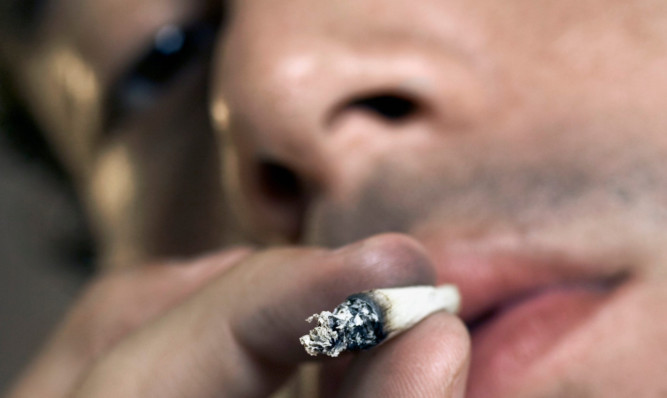As Uruguay announces unprecedented plans to legalise marijuana, Caroline Lindsay asks: will it bring deadly drugs wars to an end?
The small South American country of Uruguay could be the first country anywhere in the world to legalise marijuana. The plan to put the government at the centre of a legal marijuana industry has made it halfway through the state’s congress, with 50 out of 96 members voting in favour.
The idea is to encourage growers and sellers to produce sufficient quantities of the drug to stop users from depending on illegal drug traffickers. The move and its success so far is a hard-fought victory for the country’s President, Jose Mujica, 77, a long-fought victory in his battle against deadly drug wars.
“I’m an old man . . . I never smoked marijuana but I have come to notice what the life of young people is like,” he said last week in a recent radio interview.
“The consumption is already happening it’s around every corner, and it comes from a clandestine market that by nature has ferocious rules. It’s a monopoly of mafias.
“The worst thing of all is that it never ends!” he added.
“How many keep falling? And drugs are still out there. Why? Because the profits are enormous!”
He also pointed out that for every 10 deaths by drug overdose, there are 100 people murdered by drug traffickers.
Smoking marijuana has been legal in Uruguay for many years but growing, carrying, buying or selling can result in prison sentences. Under the new proposed legislation, adults will be able to have marijuana for recreational, medicinal and industrial reasons (such as hemp oil, wax, resin, rope, cloth and fuel).
About 8% of the population of Uruguay occasionally consumes marijuana but the illegal domestic market for all drugs is worth approximately $75 million, with paco, a low-grade cocaine, being the main hazard.
So how will it work? The idea is that the government would sell marijuana cigarettes to citizens (not foreigners) who are at least 18 years old, who would be allowed to buy up to 40g of the drug monthly. There would be strict government quality controls over legal marijuana production, as well as set prices, while taxes from the sales would fund drug-addiction treatment and rehabilitation.
The government hasn’t yet outlined how production will be managed but Mujica has suggested that 150 hectares of land (just over half a square mile) will be enough to cover demand, with distribution being carried out by a private company under strict state control.
One of the main aims of the proposed legislation is that consumers would no longer have to deal with criminal gangs, which also sell harder drugs like heroin and cocaine.
The plan has attracted praise from many quarters: “Sometimes, small countries do great things,” said Ethan Nadelmann, executive director of the US Drug Policy Alliance.
“Uruguay’s bold move does more than follow in the footsteps of Colorado and Washington. It provides a model for legally regulating marijuana that other countries, and US states, will want to consider and a precedent that will embolden others to follow in their footsteps.”
In fact, recent polls show that 50% of American citizens now support legalising marijuana, considering it to be no more harmful than alcohol and tobacco if consumed moderately.
In Latin America, the presidents of Colombia and Guatemala have both called for decriminalising drugs.
However, Gerardo Amarilla, a member of Uruguay’s opposition National Party, criticised the plans, saying that marijuana was a gateway drug and may encourage more people to become addicted to narcotics: “I believe that we’re risking too much. I have the sensation that we’re playing with fire.”
Other countries have dabbled with the decriminalisation of marijuana. More than 10 years ago, Portugal became one of the first countries to do this. Studies suggest that it has worked and that marijuana is not a significant gateway drug but it is still illegal.
Many people believe that the drug is already legal in The Netherlands but, in fact, this is a misconception. They decriminalised soft drugs in the 1970s, making it legal to buy up to 5g of marijuana from licensed vendors.
The drug is widely available as police can’t prosecute people for possession of small amounts. The country’s many licensed ‘coffee shops’ are a huge tourist attraction in Holland, with an estimated one million holidaymakers a year, including Britons, heading to Amsterdam to legally buy and smoke drugs.
But having marijuana sold and controlled by the state is uncharted territory and only time will tell if it is a success. As Time magazine pointed out: “Making ganja a state-run industry is uncharted territory a little like Franklin Roosevelt taking over Budweiser after ending Prohibition.”
However, Uruguay boasts one of the strongest economies and one of the highest rankings on the UN’s corruption gauge. Mujica himself pointed out last week that experiments like this are often best undertaken by smaller nations like Uruguay and Portugal, which can serve as more controlled laboratories for larger countries to study.
The consensus of many is that anything which helps to find new and peaceful solutions to deadly drug wars is worth a try.
